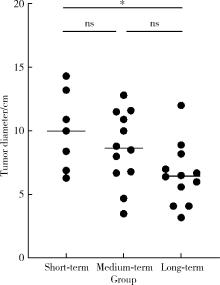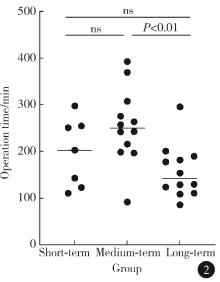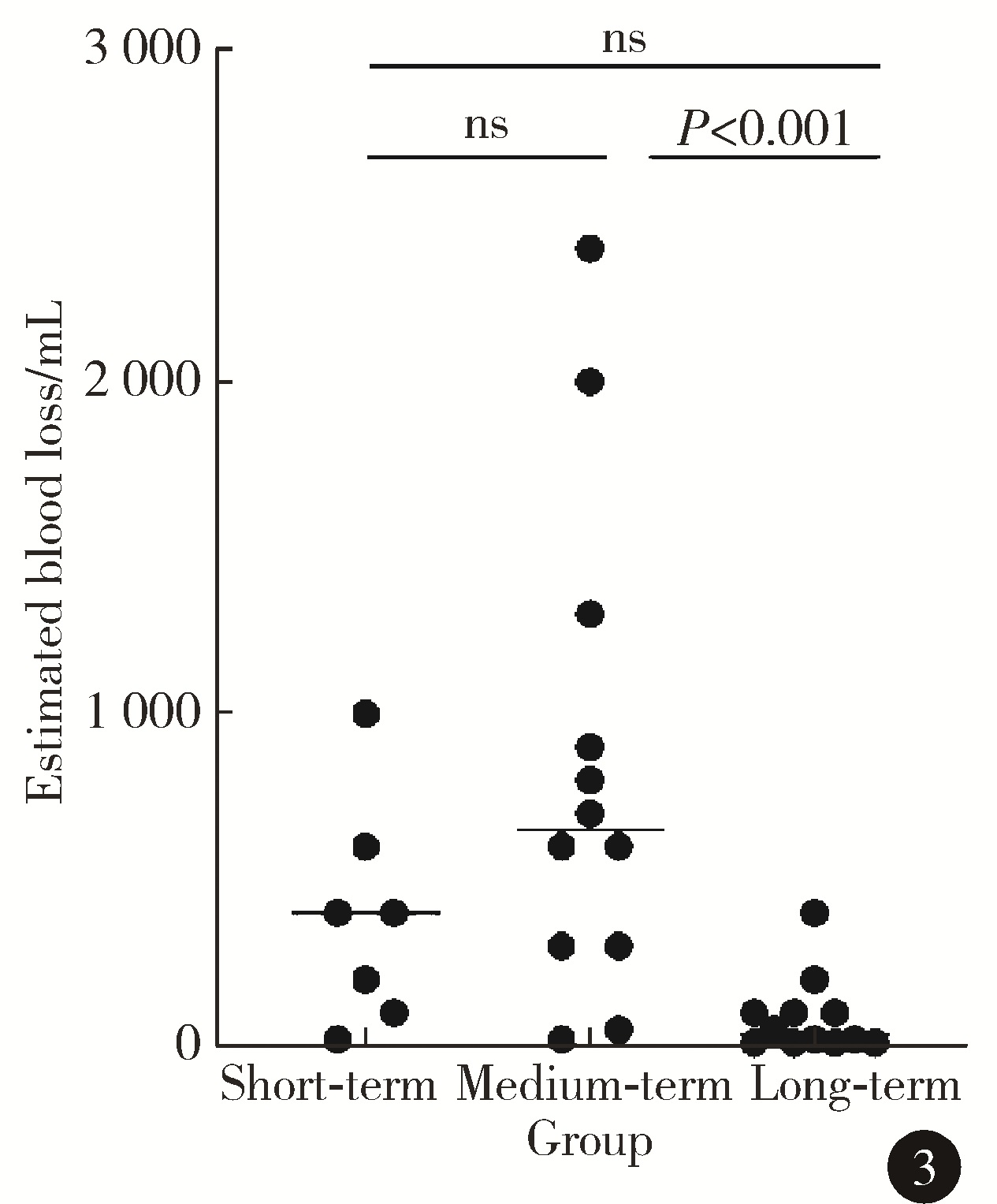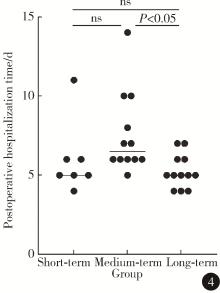Journal of Peking University (Health Sciences) ›› 2024, Vol. 56 ›› Issue (2): 326-331. doi: 10.19723/j.issn.1671-167X.2024.02.020
Previous Articles Next Articles
Discussion on the surgical timing of rupture and hemorrhage of renal angiomyolipoma
Kewei CHEN,Shaohui DENG,Zhuo LIU,Hongxian ZHANG,Lulin MA,Shudong ZHANG*( )
)
- Department of Urology, Peking University Third Hospital, Beijing 100191, China
CLC Number:
- R737.11
| 1 |
Castle SM , Gorbatiy V , Ekwenna O , et al. Radiofrequency ablation (RFA) therapy for renal angiomyolipoma (AML): An alternative to angio-embolization and nephron-sparing surgery[J]. BJU Int, 2012, 109 (3): 384- 387.
doi: 10.1111/j.1464-410X.2011.10376.x |
| 2 |
Seyam RM , Alkhudair WK , Kattan SA , et al. The risks of renal angiomyolipoma: Reviewing the evidence[J]. J Kidney Cancer VHL, 2017, 4 (4): 13- 25.
doi: 10.15586/jkcvhl.2017.97 |
| 3 |
Yamakado K , Tanaka N , Nakagawa T , et al. Renal angiomyolipoma: Relationships between tumor size, aneurysm formation, and rupture[J]. Radiology, 2002, 225 (1): 78- 82.
doi: 10.1148/radiol.2251011477 |
| 4 |
Kothary N , Soulen MC , Clark TW , et al. Renal angiomyolipoma: Long-term results after arterial embolization[J]. J Vasc Interv Radiol, 2005, 16 (1): 45- 50.
doi: 10.1097/01.RVI.0000143769.79774.70 |
| 5 | 孙青风, 王侠, 吴斌. 154例肾血管平滑肌脂肪瘤诊治原则的探讨[J]. 中国自然医学杂志, 2008, 10 (4): 259- 262. |
| 6 | Nelson CP , Sanda MG . Contemporary diagnosis and management of renal angiomyolipoma[J]. J Urol, 2002, 168 (4 Pt 1): 1315- 1325. |
| 7 | Eble JN . Angiomyolipoma of kidney[J]. Semin Diagn Pathol, 1998, 15 (1): 21- 40. |
| 8 |
Neumann HP , Schwarzkopf G , Henske EP . Renal angiomyolipomas, cysts, and cancer in tuberous sclerosis complex[J]. Semin Pediatr Neurol, 1998, 5 (4): 269- 275.
doi: 10.1016/S1071-9091(98)80005-3 |
| 9 |
Parmar N , Langdon J , Kaliannan K , et al. Wunderlich syndrome: Wonder what it is[J]. Curr Probl Diagn Radiol, 2022, 51 (2): 270- 281.
doi: 10.1067/j.cpradiol.2020.12.002 |
| 10 |
Xu XF , Hu XH , Zuo QM , et al. A scoring system based on clinical features for the prediction of sporadic renal angiomyolipoma rupture and hemorrhage[J]. Medicine (Baltimore), 2020, 99 (20): e20167.
doi: 10.1097/MD.0000000000020167 |
| 11 |
Earthman WJ , Mazer MJ , Winfield AC . Angiomyolipomas in tuberous sclerosis: Subselective embolotherapy with alcohol, with long-term follow-up study[J]. Radiology, 1986, 160 (2): 437- 441.
doi: 10.1148/radiology.160.2.3726123 |
| 12 |
Ewalt DH , Diamond N , Rees C , et al. Long-term outcome of transcatheter embolization of renal angiomyolipomas due to tuberous sclerosis complex[J]. J Urol, 2005, 174 (5): 1764- 1766.
doi: 10.1097/01.ju.0000177497.31986.64 |
| 13 | 郑汉雄, 汪曾荣, 夏昕晖, 等. 手术切除与介入栓塞治疗肾错构瘤破裂出血的疗效比较[J]. 现代肿瘤医学, 2015, 23 (22): 3296- 3298. |
| 14 |
Bissler JJ , Racadio J , Donnelly LF , et al. Reduction of postembolization syndrome after ablation of renal angiomyolipoma[J]. Am J Kidney Dis, 2002, 39 (5): 966- 971.
doi: 10.1053/ajkd.2002.32770 |
| 15 | 陈挺, 张宝金, 颜力昊, 等. 肾错构瘤破裂出血的急诊处理[J]. 临床泌尿外科杂志, 2003, 18 (10): 588- 589. |
| 16 | 江洪涛, 陈昭典, 沈周俊, 等. 肾错构瘤破裂出血的诊治(附10例报告)[J]. 临床泌尿外科杂志, 2000, 15 (8): 347- 348. |
| 17 | 李四化, 陈羽, 张俊隆, 等. 肾血管平滑肌脂肪瘤破裂出血不同手术时机的围手术期风险评估[J]. 中山大学学报(医学版), 2018, 39 (3): 400. |
| 18 | 杨兴国, 聂勇, 程帆, 等. 多中心肾错构瘤破裂出血急诊手术与非手术治疗疗效比较(附53例报告)[J]. 临床泌尿外科杂志, 2016, 31 (2): 115- 119. |
| [1] | Le YU,Shaohui DENG,Fan ZHANG,Ye YAN,Jianfei YE,Shudong ZHANG. Clinicopathological characteristics and prognosis of multilocular cystic renal neoplasm of low malignant potential [J]. Journal of Peking University (Health Sciences), 2024, 56(4): 661-666. |
| [2] | Kewei CHEN,Zhuo LIU,Shaohui DENG,Fan ZHANG,Jianfei YE,Guoliang WANG,Shudong ZHANG. Clinical diagnosis and treatment of renal angiomyolipoma with inferior vena cava tumor thrombus [J]. Journal of Peking University (Health Sciences), 2024, 56(4): 617-623. |
|
||







